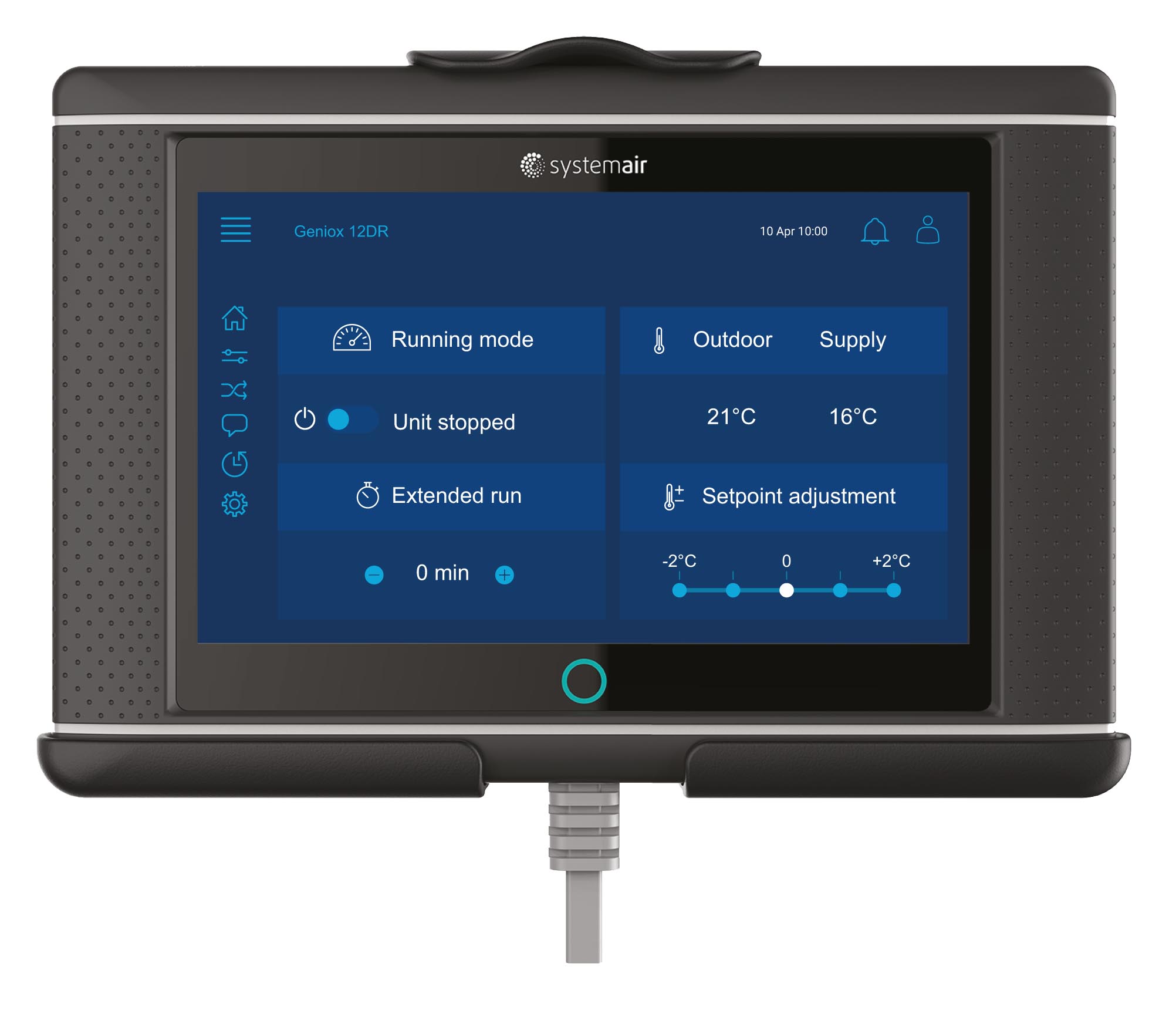|
Access 4.x |
Plate exchanger defrosting |
While in operation, the plate heat exchanger tend to condensate water vapor out of passing extract - exhaust air. During summer season the condensate water is drained. However in winter time temperature of exchanger's surfaces might drop to sub-zero level. In such cases, the water vapor condensates and sticks to the exchanger's surfaces in the form of frost. The build-up of frost lessens the thermal exchange efficiency and reduces the air flow by clogging the air channels. The defrost cycle might have to to return the exchanger to operational condition.
Access has three options of exchanger defrosting:
- Temperature monitoring. The defrosting controller temporarily reduces efficiency of the exchanger if the exhaust air is colder then preset low limit.
- Pressure monitoring. The differential pressure transmitter is used to measure the drop in the air pressure over the exchanger's extract and exhaust sides. The defrosting function is activated if the differential pressure exceeds calculated limit. Options of Bypass and Stop defrosting can be used individually or in combination.
- Sectional defrosting utilizes a differential pressure transmitter to measure the drop in the air pressure over the exchanger's extract and exhaust sides. The process of the defrosting is controlled by an external defrost module (DM50-C). The defrost module sequentially closes and opens a set of dampers that is placed on the exchanger. The closed section of the exchanger is defrosted by a warm Extract - Exhaust air. The module switches to the next section after the preset time.
